Related Research Articles

The First Ecumenical Council of the Vatican, commonly known as the First Vatican Council or Vatican I was convoked by Pope Pius IX on 29 June 1868, after a period of planning and preparation that began on 6 December 1864. This, the twentieth ecumenical council of the Catholic Church, held three centuries after the Council of Trent, opened on 8 December 1869 and was adjourned on 20 October 1870 after the revolutionary Capture of Rome. Unlike the five earlier general councils held in Rome, which met in the Lateran Basilica and are known as Lateran councils, it met in Saint Peter's Basilica in the Vatican, hence its name. Its best-known decision is its definition of papal infallibility.
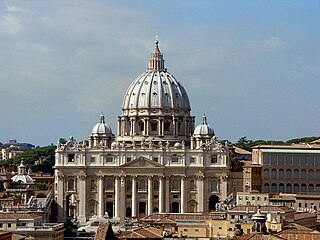
The Second Ecumenical Council of the Vatican, commonly known as the Second Vatican Council, or Vatican II, was the 21st ecumenical council of the Roman Catholic Church. The council met in St. Peter's Basilica in Rome for four periods, each lasting between 8 and 12 weeks, in the autumn of each of the four years 1962 to 1965. Preparation for the council took three years, from the summer of 1959 to the autumn of 1962. The council was opened on 11 October 1962 by John XXIII, and was closed on 8 December 1965 by Paul VI.

In the Catholic Church, the Dicastery for the Causes of Saints, previously named the Congregation for the Causes of Saints, is the dicastery of the Roman Curia that oversees the complex process that leads to the canonization of saints, passing through the steps of a declaration of "heroic virtues" and beatification. After preparing a case, including the approval of miracles, the case is presented to the pope, who decides whether or not to proceed with beatification or canonization.

A papal conclave is a gathering of the College of Cardinals convened to elect a bishop of Rome, also known as the pope. Catholics consider the pope to be the apostolic successor of Saint Peter and the earthly head of the Catholic Church.

Luigi Sturzo was an Italian Catholic priest and prominent politician. He was known in his lifetime as a "clerical socialist" and is considered one of the fathers of the Christian democratic platform. He was also the founder of the Luigi Sturzo Institute in 1951. Sturzo was one of the founders of the Italian People's Party in 1919, but was forced into exile in 1924 with the rise of Italian fascism, and later the post-war Christian Democrats. In exile in London he published over 400 articles critical of fascism.
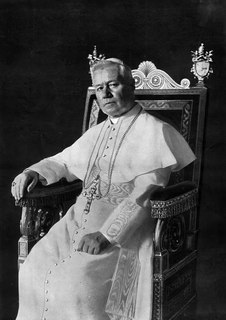
The 1903 papal conclave followed the death of Pope Leo XIII after a reign of 25 years. Some 62 cardinals participated in the balloting. Emperor Franz Joseph of Austria asserted the right claimed by certain Catholic rulers to veto a candidate for the papacy, blocking the election of the leading candidate, Cardinal Secretary of State Mariano Rampolla.

The 1846 papal conclave was triggered after death of Pope Gregory XVI on 1 June 1846. Fifty of the 62 members of the College of Cardinals assembled in the Quirinal Palace, one of the papal palaces in Rome and the seat of two earlier 19th century conclaves. The conclave began on 14 June and had to elect a pope who would not only be head of the Catholic Church but also the head of state and government of the Papal States, the extensive lands around Rome and Northern Italy which the Catholic Church governed.
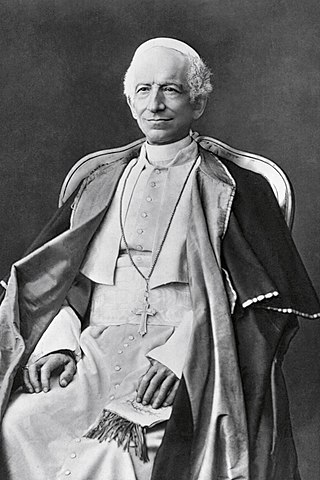
The 1878 papal conclave, which resulted from the death of Pope Pius IX on 7 February 1878, met from 18 to 20 February. The conclave followed the longest reign of any other pope since Saint Peter. It was the first election of a pope who would not rule the Papal States. It was the first to meet in the Apostolic Palace in the Vatican because the venue used earlier in the 19th century, the Quirinal Palace, was now the palace of the King of Italy, Umberto I.
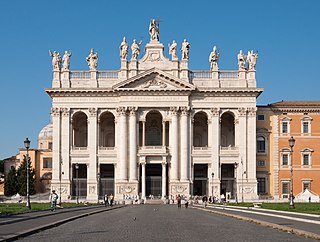
The Italian Catholic Church, or Catholic Church in Italy, is part of the worldwide Catholic Church in communion with the Pope in Rome, under the Conference of Italian Bishops. The pope serves also as Primate of Italy and Bishop of Rome. In addition to Italy, two other sovereign nations are included in Italian-based dioceses: San Marino and the Vatican City. There are 225 dioceses in the Catholic Church in Italy, see further in this article and in the article List of Catholic dioceses in Italy.
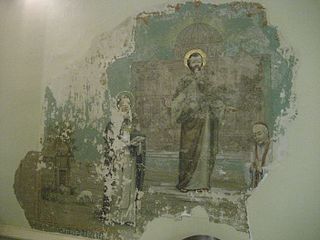
Pastor aeternus, was issued by the First Vatican Council, July 18, 1870. The document defines four doctrines of the Catholic faith: the apostolic primacy conferred on Peter, the perpetuity of the Petrine Primacy in the Roman pontiffs, the definition of the papal primacy as a papal supremacy, and Papal infallibility – infallible teaching authority (magisterium) of the Pope.

The Diocese of Caiazzo is a former Roman Catholic ecclesiastical territory in the province of Caserta, southern Italy, abolished in 1986, when it was united into the Diocese of Alife-Caiazzo. It was a suffragan of the archdiocese of Capua.

The Italian Catholic diocese of Monopoli, in the province of Bari, existed from the eleventh century to 1986. In that year it was united into the diocese of Conversano-Monopoli.
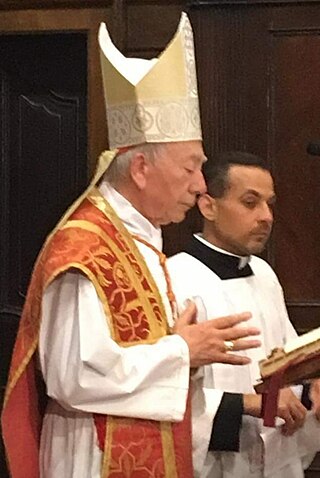
Francesco Coccopalmerio is an Italian cardinal. He was president of the Pontifical Council for Legislative Texts from his appointment by Pope Benedict XVI on 15 February 2007 until his resignation was accepted by Pope Francis on 7 April 2018. He spent his early years in the Archdiocese of Milan and became an auxiliary bishop in 1993. He moved to the Roman Curia in 2000.

The Diocese of Alife-Caiazzo is a Roman Catholic ecclesiastical territory in Campania, southern Italy, created in 1986. In that year the historic Diocese of Alife was united with the Diocese of Caiazzo. The diocese is a suffragan of the Archdiocese of Naples.
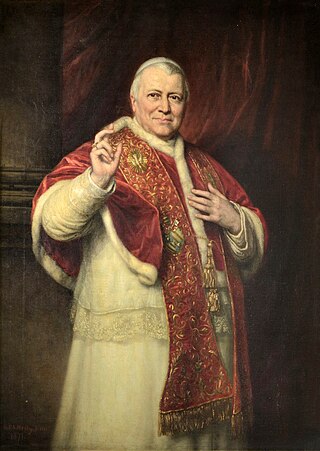
Papal infallibility is a dogma of the Catholic Church which states that, in virtue of the promise of Jesus to Peter, the Pope when he speaks ex cathedra is preserved from the possibility of error on doctrine "initially given to the apostolic Church and handed down in Scripture and tradition". It does not mean that the pope cannot sin or otherwise err in most situations.

Edward Mary Fitzgerald was an Irish-born American prelate of the Roman Catholic Church. He served as bishop of the Diocese of Little Rock in Arkansas from 1867 until his death in 1907.

"Roman Catholic" is sometimes used to differentiate members of the Catholic Church in full communion with the pope in Rome from other Christians who also self-identify as "Catholic". It is also sometimes used to differentiate adherents to the Latin Church and its use of the Roman Rite from Catholics of the Eastern Catholic Churches. It is not the official name preferred by the Holy See or bishops in full communion with the pope as a designation for their faith or institution.

Luigi Bettazzi is an Italian prelate of the Catholic Church who was bishop of Ivrea from 1966 to 1999. One of the youngest and most junior participants in the Second Vatican Council, he was one of the original signatories of the Pact of the Catacombs.
The Diocese of Vico Equense was a Roman Catholic diocese located in the coastal town of Vico Equense in the Metropolitan City of Naples, in Italy. It was suppressed in 1818 to the Archdiocese of Sorrento. It is now included in the Catholic Church's list of titular sees.
Luigi Riccio was a Roman Catholic prelate who served as Bishop of Vico Equense (1627–1643).
References
- ↑ Vatican Council , as it appeared in the 1913 Catholic Encyclopedia
- ↑ Caiazzo, Michael and Monika K. Hellwig. "The Modern Catholic Encyclopedia", 2004
- ↑ "Bishop Luigi Riccio [Catholic-Hierarchy]".